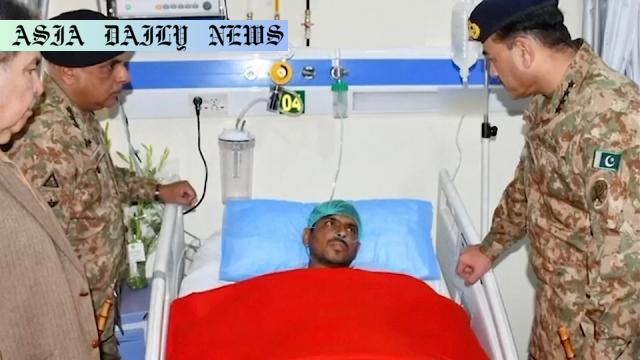Balochistan: Security forces in Pakistan clashed with separatist insurgents in an intense battle that claimed 41 lives, including soldiers and militants.
Balochistan became the center of deadly clashes that killed 41 people, including 18 soldiers.
The Baloch Liberation Army (BLA) claimed responsibility for the insurgent attack.
Prime Minister Shehbaz Sharif pledged to continue the fight against terrorism.
The Pakistani military conducted further operations, destroying militant hideouts and intensifying tensions.

The Genesis of the Conflict in Balochistan
The province of Balochistan, in southwestern Pakistan, has long witnessed unrest as separatist groups have sought autonomy or independence. The region is rich in natural resources, making its control crucial for both insurgent groups and the government. On Friday night and into Saturday, these tensions erupted into violence, culminating in one of the deadliest clashes in recent months. According to Pakistan’s military authorities, 41 individuals lost their lives, including 18 soldiers and 23 insurgents, highlighting the intense and escalating conflict.
Roadblocks, Skirmishes, and an Escalating Death Toll
The fighting began after security forces sought to dismantle roadblocks that insurgents had erected in the area. These barricades were not simply physical barriers but strategic points for insurgents to assert control over the region. In the ensuing confrontation, 18 soldiers and 12 militants were killed. Pakistan’s military responded with a series of operations termed “sanitization efforts,” which included targeted raids on militant hideouts. These operations reportedly led to the deaths of an additional 11 insurgents. The Baloch Liberation Army (BLA) claimed responsibility for the initial attack, further solidifying their role as one of the most prominent separatist groups in the region.
The Role of the Baloch Liberation Army (BLA)
The BLA has been at the forefront of the armed separatist movement in Balochistan. The group has escalated its operations in recent years, often employing calculated violence to force the issue of independence onto both national and international stages. In November, for instance, the group claimed to have carried out a suicide bombing at a railway station in Quetta, Balochistan’s provincial capital, which tragically took over 20 lives. The attack this past weekend underscores the group’s persistence and its willingness to engage in significant and bloody confrontations with Pakistan’s military forces.
Pakistan’s Response: Military and Political Statements
In the wake of the clashes, Prime Minister Shehbaz Sharif condemned the violence, reiterating his government’s commitment to eradicating terrorism. “We will continue to fight against the monster of terrorism until it is completely eradicated,” Sharif declared, signaling a staunch stance against insurgent activities. Similarly, the military’s actions to destroy insurgent hideouts indicate a strategy aimed at dismantling the BLA and other militant groups’ infrastructure in Balochistan.
Humanitarian Impact and Regional Ramifications
The ongoing conflict has taken a significant humanitarian toll, displacing communities and creating a pervasive sense of insecurity in the region. Civilians often find themselves caught in the crossfire between insurgents and state forces, leading to widespread suffering and fear. Furthermore, the unrest in Balochistan has implications for Pakistan’s broader geopolitical landscape. The region’s strategic importance, particularly its proximity to the China-Pakistan Economic Corridor (CPEC), means that stability in Balochistan is not just a domestic concern but also a global one.
The Path Ahead: Challenges and Potential Resolutions
Resolving the conflict in Balochistan remains a significant challenge for Pakistan’s government. While military operations may address immediate threats, they do little to resolve the underlying grievances that fuel the insurgency. Economic marginalization, lack of representation, and cultural alienation are among the core issues that need attention. A multipronged approach, combining military efforts with inclusive political dialogue and socioeconomic development, is essential for lasting peace in the region.



Commentary
The Human Cost of Conflict in Balochistan
The recent clashes in Balochistan are a stark reminder of the human cost of protracted conflicts. With 41 lives lost over two days, the incident underscores the severity of the situation and the urgent need for resolution. While the focus is often on military strategies and insurgent activities, it is the civilians who bear the brunt of these hostilities. Displacement, fear, and loss of life have become an all-too-common reality for many in the region.
The Role of Negotiations in Long-Term Stability
It is evident that military actions alone cannot bring peace to Balochistan. While the government’s efforts to combat terrorism are commendable, they must be accompanied by meaningful dialogue with stakeholders in the region. Addressing the grievances of the local population, such as economic deprivation and lack of representation, is crucial for undermining the support base of insurgent groups like the BLA. Negotiations may be challenging, but they are necessary for sustainable peace.
A Global Perspective on Regional Stability
Balochistan’s unrest is not just a national issue for Pakistan; it has far-reaching implications for regional and global stability. The province’s strategic location and its role in projects like the China-Pakistan Economic Corridor make it a critical area of focus for international stakeholders. Peace in Balochistan is essential not only for Pakistan’s development but also for strengthening economic and diplomatic ties in the region. The global community must support efforts for a peaceful resolution, ensuring that the region moves towards stability and prosperity.